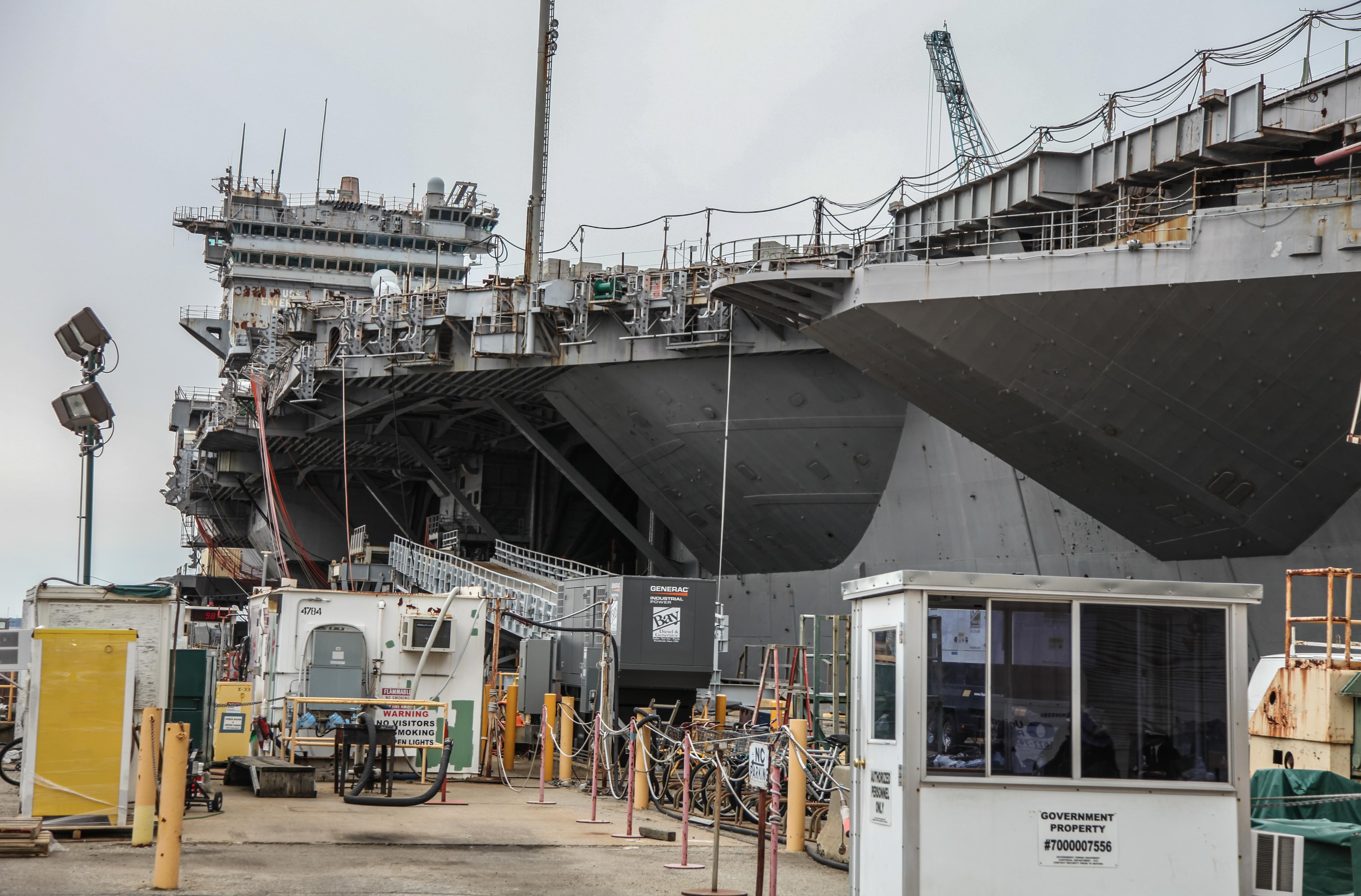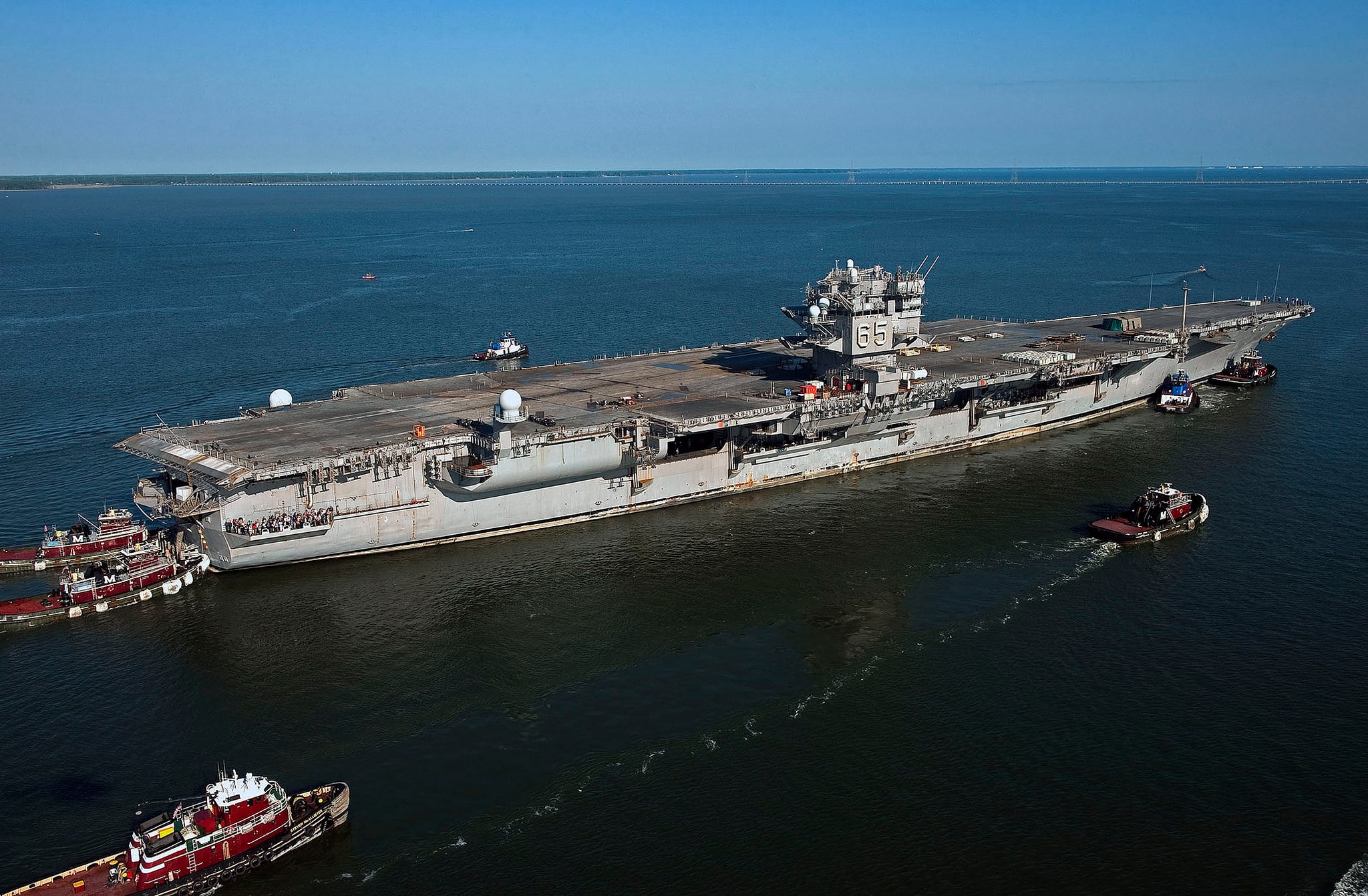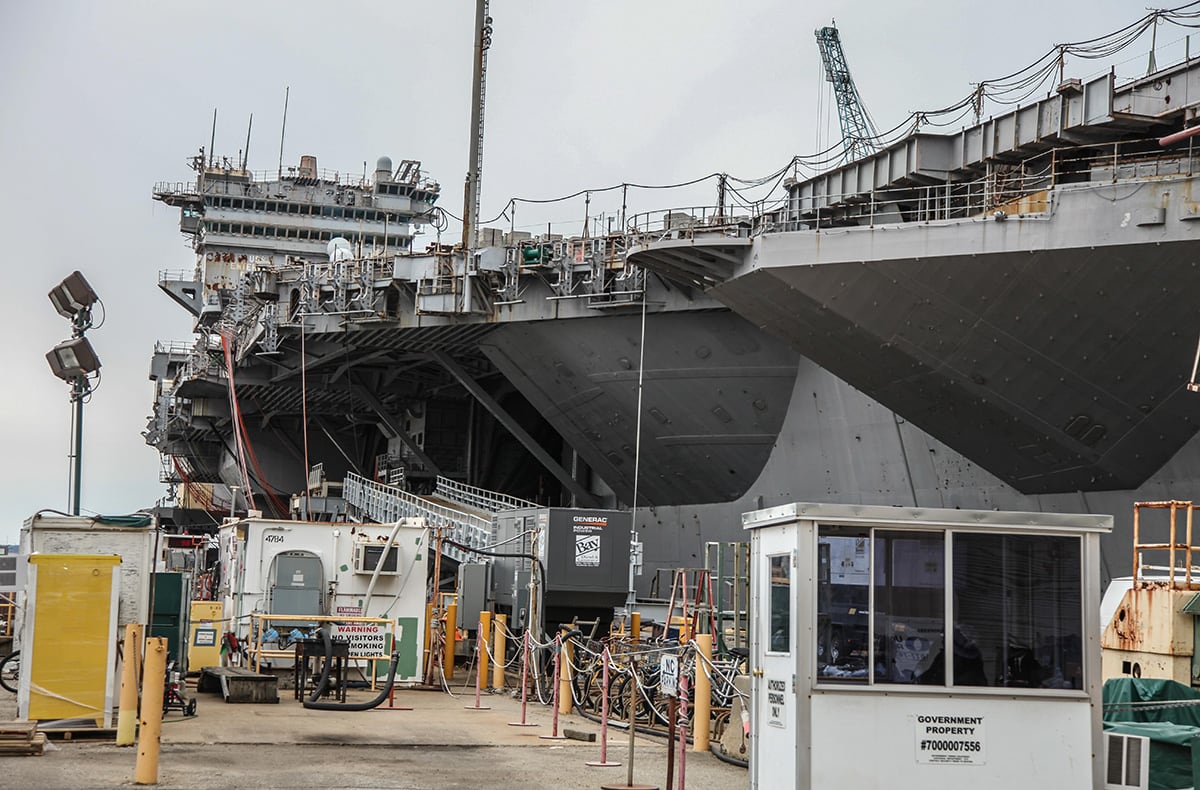Scrapping the world’s first nuclear-powered aircraft carrier could cost the Navy as much as $1.5 billion and take more than a decade to complete, according to the Government Accountability Office.
But the final price tag and the future timetable for dismantling the decommissioned Enterprise ultimately will depend on whether the Navy can contract with a private shipyard to finish the job or make its Puget Sound Naval Shipyard do the work.
The private sector option would be cheaper and faster, but the project is tangled in bureaucratic red tape, the federal watchdog agency warned in a report released on Thursday.
That’s mostly due to squabbling between the Navy and the Nuclear Regulatory Commission over which agency can legally oversee the dismantling project if it’s handed over to a commercial shipyard.
By law, Naval Reactors is the Navy department handling all the service’s nuclear propulsion programs while the NRC oversees civilian nuclear reactors, materials and waste disposal.
Navy officials began requesting bids from commercial contractors in 2016 but had to stop in early 2017 because of the ongoing dispute.
RELATED

In an effort to resolve the standoff, Congress ordered GAO to investigate and make recommendations.
The Navy has never dismantled a nuclear vessel the size of the “Big E" and the disposal headaches aren’t going away with the carrier project. Nimitz-class flattops will begin to reach the end of their projected half-century service lives over the next seven years, too.
Commissioned in 1961, the Enterprise was deactivated in 2012 after 51 years in the fleet but wasn’t officially decommissioned and stricken from the Navy’s rolls until early 2017.
That’s because crews first had to remove the fuel from the Enterprise’s eight nuclear reactors, a process that took just over four years to complete. For the past 17 months the carrier has been tied up at Huntington Ingall’s Shipyard in Newport News, Virginia.
GAO recommends that lawmakers make the Pentagon strike a deal with NRC on the dismantling problem, but military officials contend they’ve been trying to do that since 2016.
RELATED

“Naval Reactors has been coordinating with the NRC on this matter for nearly two years,” wrote Assistant Secretary of Defense for Acquisition Kevin H. Fabey in the Pentagon’s endorsement of the report. “Since the concern expressed by the NRC is a lack of authority, and such a position severely impacts the Navy’s ability to pursue a commercial option, we are highlighting it in our response while continuing to work with NRC to resolve.”
Since 1990, the Navy’s Puget Sound facility has dismantled and disposed of more than 130 reactors while sending its non-nuclear vessels to industry to break apart and recycle, including ex-carriers like the Constellation and Ranger.
Commercial companies have decommissioned 32 civilian nuclear reactor plants, work the Navy agrees is comparable to the process at Puget Sound.
That’s where the Navy initially wanted to take the Enterprise’s 28,000-ton nuclear propulsion section. After workers there ripped apart the reactors, they would repackage the parts and ship them to the low-level radioactive disposal complex in Hanford, Washington.
But a workload backlog at Puget Sound means the shipyard can’t get to the Big E until 2034 and it would take another decade and between $1 billion and $1.5 billion to complete the job.

By forcing Puget Sound to tackle the Enterprise, the Pentagon also would exacerbate the problem of maintaining warships the Navy needs in the fleet, GAO concluded.
GAO estimates that a commercial contractor could dismantle the Enterprise by 2029 at a cost of $750 million to $1.4 billion without harming fleet readiness.
Mark D. Faram is a former reporter for Navy Times. He was a senior writer covering personnel, cultural and historical issues. A nine-year active duty Navy veteran, Faram served from 1978 to 1987 as a Navy Diver and photographer.





